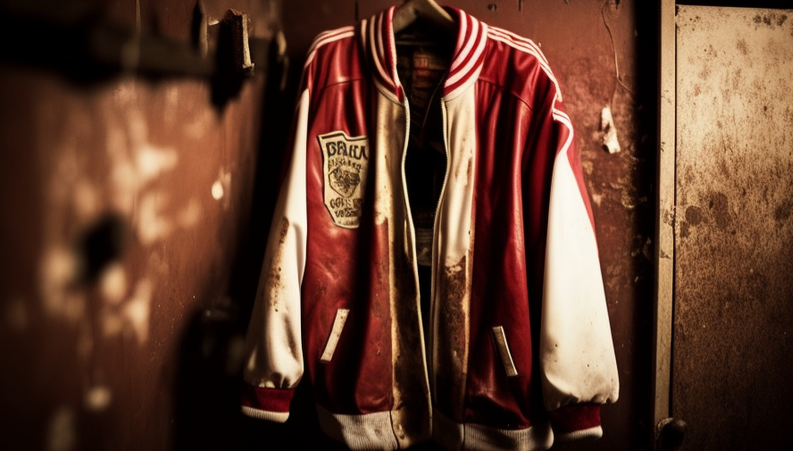Football Memorabilia: What You Need To Know

Table of Contents
Introduction
Collecting football memorabilia is a great way to have your love of football live on throughout the years. Defined as sports collectables by Wikipedia, football memorabilia comes in many different forms, such as:
- Shirts
- Boots
- Trophies
- Sports Cards
- Autographs
- Pictures
The list is endless. Basically, anything that a football player has touched or worn in a match can be classed as memorabilia. These items often invoke past moments of Premier League glory, or, in England’s case, World Cup heartbreak – sorry England fans!
In this article we’ll take a look at the history of football memorabilia, why it has become such a pillar of UK culture, as well as what to look out for when investing in items.
The History of Football Memorabilia
Whether it’s Gary Linekar’s boots or Thierry Henry’s shirt, football memorabilia has always been a fun way to collect your favourite moments of football history. But where did it all start? Way back in Edwardian and Victorian England.
Collecting sports memorabilia dates back to the beginning of sports itself. However, it wasn’t until the Victorian and Edwardian periods in England when the acquisition of sporting memorabilia for personal pleasure began in earnest among sporting gentlemen. During this time, many now-famous artists produced classic sporting drawings, paintings, prints, and watercolours, and numerous books were written about sports such as boxing, football, fishing, golf, horse racing, and others. A lot of these older bits of memorabilia are at risk of being lost though, and you can find out more about that here.
So enough of the boring history. You didn’t come here for that. Let’s talk about why people collect football memorabilia.
Football Memorabilia: Why Collect It?
Relive your Favourite Football Memories
Football is all about emotions. Memories. Experiences. And collecting precious football treasures epitomises this. Purchasing your favourite footballer’s match worn shirts or boots is a great way to store that memory in physical form, with collectors often framing these to ensure the items are kept in the best condition possible. These frames can be hung around the house, and are a great reminder of those amazing moments you witnessed.
If you’re interested in where you can get your football memorabilia framed, you can check out Football Shirt Frames. Football memorabilia is often bought at charity auctions, where the proceeds of your purchase go towards a great charity cause.
Football Investment Opportunity
It’s no secret that football memorabilia can make you a lot of money. Many collectors often find themselves with items that gain a lot of value over time. Take one Maradona shirt for example. After the famous ‘Hand of God’ world cup quarter final between Argentina and England, Diego Maradona’s match worn shirt was sold at auction for an eye-watering $8.95 million, making it the most expensive piece of football memorabilia in history. Crazy right? Invest in the right shirt or pair of boots, and you might find yourself raking in the cash too.
If you’re interested in getting started in investing in football memorabilia, looking on eBay is a great way to start. Plenty of collectors list their items on eBay at competitive prices, which means you can scoop up a great deal when first entering the game.
The Most Valuable Football Memorabilia
Now we’ve talked about the history of football memorabilia and why it might be a good idea to buy some, let’s take a look at some of the most valuable football memorabilia in the world. Here’s the top 10 most expensive memorabilia:
- Sir Geoff Hurst, the striker of England’s 1966 World Cup winning team, remains a legend in English football history for being the only player to score a hat-trick in a World Cup final. His jersey from the final was sold for £130,000 in 2000, but failed to find a buyer in a 2016 auction. Despite this, Hurst’s legacy will continue to inspire football fans for years to come.
- Gordon Banks, the legendary goalkeeper of England’s 1966 World Cup-winning team, was a crucial part of the team’s success and is widely considered as one of the greatest goalkeepers in English football history. His exceptional skills earned him numerous individual awards, and in 2001, his medal was sold at an auction for £170,000, solidifying his status as an icon of the sport.
- George Best, widely regarded as one of Manchester United’s greatest players and Northern Ireland’s finest footballer, cemented his place in history with his remarkable performance in the European Cup 1968 final. Best’s stoppage-time goal secured a crucial victory for Manchester United, making it one of the most iconic moments in European football history. In 2010, his medal from the match was sold at an auction for £220,000, a testament to the impact he had on the sport.
- Pele, one of the most celebrated footballers of all time, was the first player to achieve global fame and secured his place in history by winning three World Cups during his career. In the 1970 World Cup, Pele scored the opening goal of the final, captivating football fans worldwide. The shirt he wore during that historic match was later auctioned off in 2002 for a staggering £230,000, a testament to the legendary status he holds in the sport.
- Alan Ball, the youngest member of the England National side during the 1966 World Cup campaign, secured his place in history by being named the man of the match in the tournament’s final. His medal from the final was later sold for a record-breaking £240,000, making it the most expensive football medal ever sold. Ball’s impressive career included over 100 appearances for three Premier League clubs, earning him a place among the legendary names of English football.
- The list of highest-sold football items has been dominated by World Cup medals that justify the emotions attached to this prestigious trophy. Member of the World Cup winning English side against West Germany played every minute of finals during that of World Cup. Nobby Stiles’ medal for the Winning term of the World Cup 1996 was sold for £260,000 in 2010.
- The replica of the Jules Rimet trophy, which was sold as the original trophy for the 1966 World Cup won by the England National Side, holds the distinction of being the craziest football item ever sold, with a price tag of £350,000. The original trophy was stolen from a display in Brazil and later recovered by a dog named Pickles, but it was rumoured to have been melted down into gold bars. Despite being a replica, the Jules Rimet trophy remains a highly prized item among football collectors and enthusiasts alike.
- The FA Cup, one of England’s oldest and most prestigious football knockout cups, holds immense value in the history of English football. The trophy from the 1912 season has been auctioned three times, with each sale drawing significant attention from football enthusiasts. David Gold, the owner of West Ham United, was the previous owner of the trophy, but it was sold to Sheikh Mansour, the owner of Manchester City, in 2020, adding to the significance of the trophy in the context of modern English football.
- The Sheffield Rules, a code of football created by the Sheffield United Football Club and played in the city of Sheffield, England from 1858 to 1877, had a profound influence on modern football. The rule book introduced several concepts, such as the corner, goalkeeper, and striker rules, which continue to be an integral part of the sport today. The book was even adopted by the Football Association in England. In 2021, this iconic item was sold for an astounding £1.24 million, making it the second-highest selling football item in history, and a testament to the significant impact of Sheffield Rules on the sport.
- Diego Maradona’s infamous “Hand of God” goal is widely regarded as one of the most iconic moments in football history, inspiring generations of football fans around the world. His World Cup-winning shirt, which was on display for several years, was sold at auction in 2022 for an unprecedented $8.95 million, making it the most valuable football item ever sold. The sale of this legendary piece of memorabilia further cements Maradona’s status as one of the greatest footballers to ever grace the sport.
How To Make Sure Your Football Memorabilia is Authentic
Purchasing can be very pricey, so you need to make sure that you are 100% certain that what you are buying is legit. Ensure you take into consideration the following verification steps:
- Make sure the memorabilia certificate of authenticity comes from a reputable authentication company
- Educate yourself on what memorabilia and signatures look like, and compare
- Ensure the signature is not ghost signed by anyone else
- Check for signs of glare on the signature – if it shimmers or gleams, it could be fake
If you’re looking to purchase football memorabilia for a loved one’s birthday or special occasion, check out our guides on the best football gifts on Fan Lounge!
Joe Robinson is a lifelong Manchester United fan with a passion for football and discovering new stadiums. He's a seasoned away day visitor who has extensive knowledge of football-related matters, including food, facilities, and parking arrangements.





